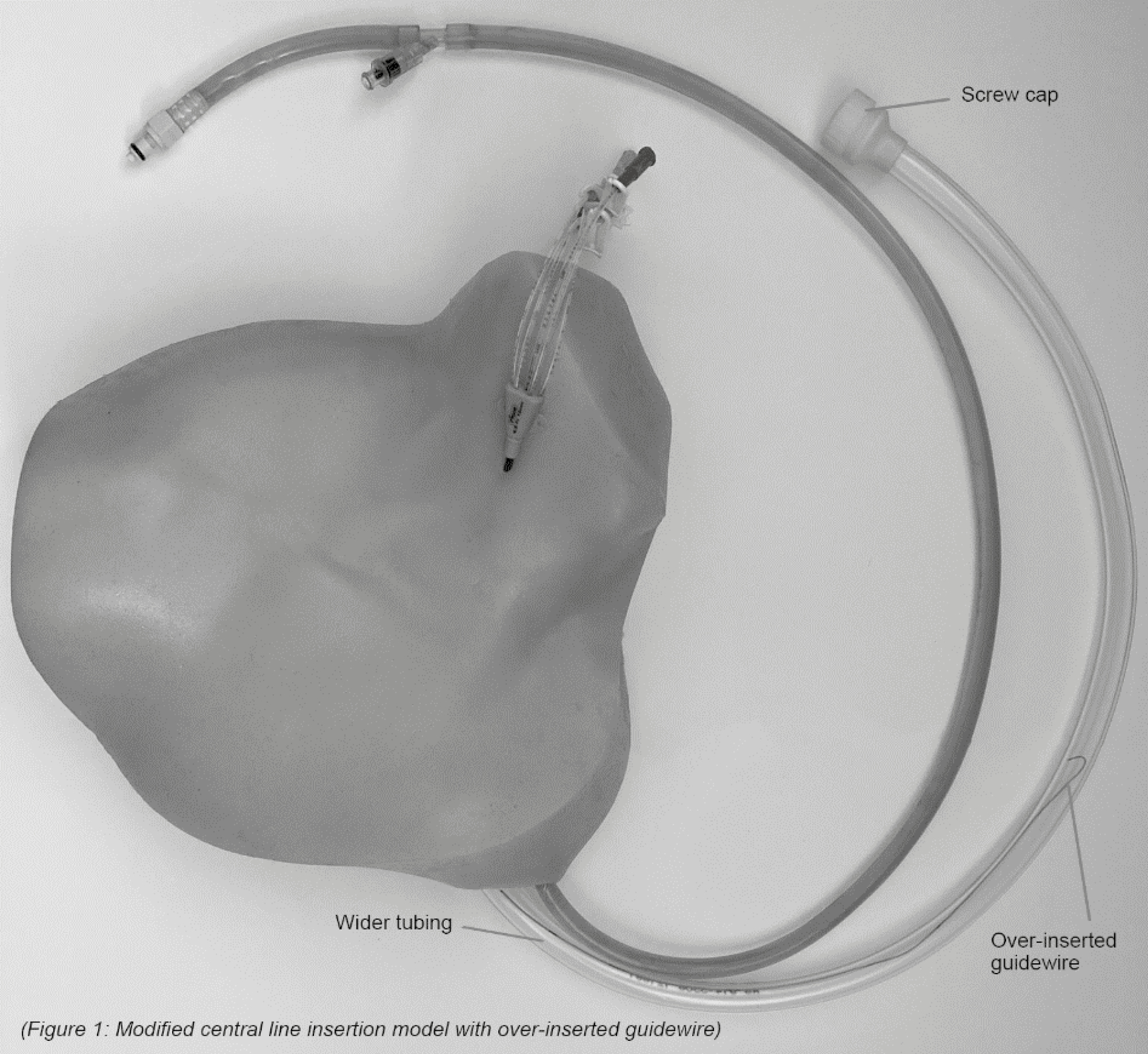The International Journal of Healthcare Simulation has been rebranded as the Journal of Healthcare Simulation. Please visit https://www.johs.org.uk to view all articles and for article submissions.
The International Journal of Healthcare Simulation has been rebranded as the Journal of Healthcare Simulation. Please visit https://www.johs.org.uk to view all articles and for article submissions.

Training in simulated environments allows clinicians to practise procedures and make mistakes without risk to patients. It is important training models offer sufficient fidelity, allowing the trainee to face the same difficulties and hazards that they would in clinical practice. This is particularly true of technical skills training using part-task trainers. Current designs of central-venous cannulation simulators may not fully meet this need. Not all training models allow for the guidewire in the Seldinger technique to be over-inserted. This means guidewire loss cannot be demonstrated in many simulators, which undermines recognition of this important complication, one of the preventable and significant hazards of the procedure [1]. Our simulation centre uses Blue Phantom’s Gen II Central Line Ultrasound Training Model. This simulator replicates the upper torso and neck, with a right internal jugular vein and carotid artery that can be cannulated. The simulated vessels terminate in clear tubes that run outside of the manikin’s torso and contain a reservoir of fluid. Full insertion of the line is blocked due to the diameter of the reservoir tubing being too small to accommodate the J-tip of the guidewire.
In order to permit over-insertion of the guidewire, the tubing connected to the internal jugular vein has to be replaced with one of a larger diameter, sufficient to allow passage of the guidewire’s J-tip. We developed a 3D printed adaptor which allows smooth passage of the wire into the larger-diameter tubing. The connection between the tube and adaptor is then made water-tight with silicone sealant. The modifications were designed using SolidWorks, Dassault Systèmes, and printed using VeroWhitePlus™ on a Object500 Connex1™ by Stratasys. Since the reservoir tubing can now accommodate guidewire retention, a further modification was required to allow for retrieval of the wire at the end of the simulation. We have achieved this by including access to the tubing secured by a screw cap.
With the modifications made (Figure 1), the guidewire can now be over inserted and easily recovered by faculty at the end of the simulation. This is an important modification because it eliminates the artificial feedback trainees would receive in other models on attempting to over-insert their wire.


The trainee cannot now rely on the manikin preventing them from making this potentially serious mistake, so training now more accurately replicates the real-life experience. This allows for a richer training experience and a more valuable post-simulation learning conversation.
1- Cheung ME, Mellert LT, Firstenberg MS. Bedside Procedure: Retained Central Venous Catheter. In: Firstenberg MS & Stawicki SP, editors. Vignettes in Patient Safety – Volume 2. London: IntechOpen; 2017. https://www.intechopen.com/chapters/56490 doi: 10.5772/intechopen.69748 [Accessed on 10/06/2022].